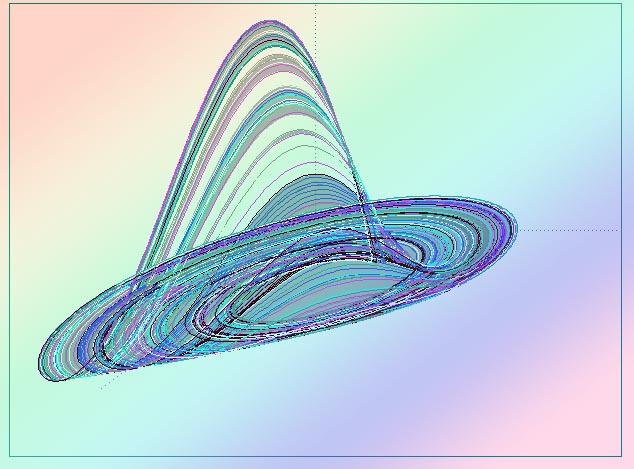Belgian mathematician hopes to use the science of chaos, the butterfly effect and strange attractors to help build a complete model of climate and resources that will lead to a new approach to sustainable development. Jacques Nihoul of the department of Model Environment at the University of Liège, in Belgium, writing in the inaugural issue of the International Journal of Computing Science and Mathematics published by Inderscience, explains how a new approach to sustainable development and climate change could emerge from his research.

Sustainable development is high on the socio-political and scientific agenda. However, while it has become the focus of major attention in international from national and international organisations across the globe there is currently no all-encompassing approach to understanding what is needed to achieve it in developed and developing countries.
According to Nihoul, sustainable development involves finding a balance between the exploitation of natural (living and non-living) resources to meet the needs of the present generations without jeopardising the capacity of future generations to meet their own needs. He explains how a concept of sustainability includes a vision of the earth as almost a closed system in which we are limited in what is achievable by earth-bound resources and energy from the sun.
Current approaches to sustainable development do not fully involve complete methods and techniques for using, recycling, and replacing natural resources. Moreover, they do not take into consideration the effects of ongoing economic policies and fluctuating human populations. This is where the butterfly effect of chaos theory fame must be resurrected, says Nihoul.
The phrase "butterfly effect" was coined to capture the notion that tiny deviations in initial conditions, the flapping of a butterfly's wings in one place, for instance, could ultimately impact through a chaotic chain of events on the weather on the other side of the world. A single flap perhaps disturbing the airflow minutely, but leading to a following wind, that builds into a devastating hurricane that makes landfall. Without the butterfly the hurricane may have exhausted itself far out to sea instead.
Chaos theory is a major component of the computer models used by climatologists and weather forecasters as well as economists seeking patterns in the rise and fall of stock market values. However, Nihoul explains that while these models can provide useful information to feed into a global sustainable development policy, they must also take into account those butterflies on the periphery too.
"Models of sustainable development on the ten-year and century-long timescales, must take into account both the diversity and the ‘turbulence’, the fluctuations on much shorter and more local scales," explains Nihoul.
Nihoul has developed a new modelling approach to climate, resources, economics, and policy, that sees the world system as interconnected local happenings rather than taking the smoothed global view favoured in much simpler studies. The earth cannot be modelled as a whole, he says, but rather as a mosaic of different systems, each with its own network of smaller systems and so on. Such an approach recognises the importance of global effects but also of the tiny deviations, the exquisite flapping wing of a butterfly as having a potentially enormous effect, chaotically speaking.
Jacques C.J. Nihoul, "Chaos, diversity, turbulence and sustainable
development", Int. J. Computing Science and Mathematics, 2007, Vol. 1, No. 1, pp 107-114




Comments